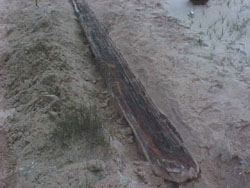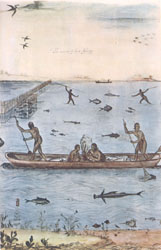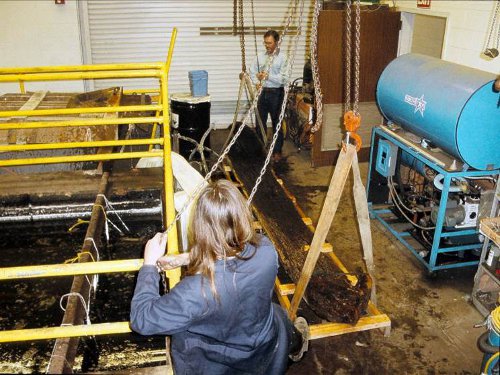Canoes
Prehistoric Canoes in Florida

 Prehistoric canoes are important and fragile artifacts, and more have been found in Florida than in any other state. There are currently over 200 recorded sites in Florida that have canoes or log boats. Some are single canoes, others are groups of canoes, and a few sites have large numbers of canoes in close proximity. These canoes are a part of the archaeological record and provide information about Florida's past. Canoes are a good measure of wet-site resources, which are well-known from Florida sites like Windover Pond, Hontoon Island, and Key Marco. The oldest canoes date to the Middle Archaic Period, ca. 6,000 to 7,000 years ago, but canoes from many time periods are known, including examples made by American Indians, Europeans, and American settlers. All artifacts located on state owned lands or sovereign submerged bottoms, including canoes, are property of the state. Chapter 267, Florida Statutes, assigns ownership of these items to the Division of Historical Resources, so that they may be protected and conserved for future generations on behalf of the citizens of Florida. It is illegal to remove or disturb artifacts on state lands, including canoes. If you believe that you have located a canoe, please contact the Division of Historical Resources. All canoe finds are recorded in the Florida Master Site File. In many cases we are able to visit canoes that are reported to collect samples for wood identification and radiocarbon dating, and to make scale drawings.
Prehistoric canoes are important and fragile artifacts, and more have been found in Florida than in any other state. There are currently over 200 recorded sites in Florida that have canoes or log boats. Some are single canoes, others are groups of canoes, and a few sites have large numbers of canoes in close proximity. These canoes are a part of the archaeological record and provide information about Florida's past. Canoes are a good measure of wet-site resources, which are well-known from Florida sites like Windover Pond, Hontoon Island, and Key Marco. The oldest canoes date to the Middle Archaic Period, ca. 6,000 to 7,000 years ago, but canoes from many time periods are known, including examples made by American Indians, Europeans, and American settlers. All artifacts located on state owned lands or sovereign submerged bottoms, including canoes, are property of the state. Chapter 267, Florida Statutes, assigns ownership of these items to the Division of Historical Resources, so that they may be protected and conserved for future generations on behalf of the citizens of Florida. It is illegal to remove or disturb artifacts on state lands, including canoes. If you believe that you have located a canoe, please contact the Division of Historical Resources. All canoe finds are recorded in the Florida Master Site File. In many cases we are able to visit canoes that are reported to collect samples for wood identification and radiocarbon dating, and to make scale drawings.
Prehistoric canoes are extremely fragile. Wood that has been submerged must be properly conserved because it will begin to deteriorate once it has been exposed to air. The conservation process can take several years to thoroughly stabilize the wood.

If you find a wet canoe, it is imperative that the canoe be kept wet; if the canoe is already dry, do not attempt to wet it again. Do not attempt to move the canoe. Archaeologists can learn more about how the canoe was used in the past from its location and the materials it is found with, but if the canoe is moved, then this information becomes more difficult to determine.
If you find a canoe, please contact Paulette McFadden with the Bureau of Archaeological Research at Brandon.Ackermann@dos.myflorida.com or 850.245.6334.
You will be asked to provide your name and contact information so that we can contact you with additional questions about the site and keep you informed about the project. You also will be asked the following questions. Your answers will help us to assess the situation and determine the best course of action for protecting your find.
- Where is the canoe located? Specifically, you'll be asked to provide a location for the canoe. While GPS coordinates are best, driving directions are acceptable. You may be asked to provide a map with the canoe's location marked.
- Is the canoe threatened in any way? We want to know if the canoe is in danger of being damaged by development or construction, or if it will stay exposed to air for a long time, as in the case of a submerged canoe exposed during a drought.
- Is the canoe wet or dry?
- Has the canoe been moved since it was found?
- Are there, or were there any other artifacts found in or near the canoe?
- Is there anyone else who can provide information about the canoe?

